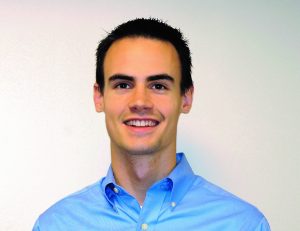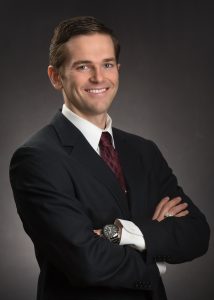

Photo: Emilia Tou
Maria Tou SB ’14, Chemical Engineering
The vision of a sustainable, renewable energy future inspires the work of Energy Studies Minor alumna Maria Tou. She is currently pursuing a PhD at ETH Zurich in Switzerland.
What’s the focus of your current research at ETH Zurich?
I’m working on my PhD in a lab that focuses on renewable energy carriers. Most of our research looks at how we can use concentrated solar energy to produce liquid fuels. We imagine diesel or jet fuel or gasoline, but with sun as the energy source instead of digging it out of the ground. We take starting components of water and carbon dioxide, and by using solar energy and running high-temperature thermochemical reactions, we upgrade them back into fuel. One way to think of it is as a reverse combustion process. You take those waste products and you reform them back into useful fuel. You could then theoretically close the carbon cycle.
What drew you to studying concentrated solar power?
What drew me to the research was definitely this ideal picture of being able to take a renewable source like the sun and make something as necessary to everyday life as these liquid fuels that the world is so dependent on. It was very much the renewable aspect, especially as it applies to being able to store energy in more energy-dense carriers.
Did the energy minor at MIT impact your choice of graduate program?
Definitely. Actually, the reason that I am at ETH today is one of the classes I took for the energy minor. Senior year, I took Fundamentals of Advanced Energy Conversion with Professor [Ahmed] Ghoniem. In the class, we had a semester-long project where each group was studying a different kind of energy conversion technology, and my group was focused on the topic of solar fuels. That’s when I found out that there’s a lab at ETH that works on this. So later when I decided I wanted to do a PhD, I asked for contact information for the professor who directs the lab and then reached out to see if they had any positions. That was a really great opportunity that I got through the energy minor.
Do you have any advice for a current student considering a career in energy?
I guess just go for it! Don’t be discouraged by what the current field looks like because, if you’re a student right now, by the time you reach the job market, the energy market will have grown and developed. So I would say that if what you’re looking for doesn’t quite exist, that’s not a reason to leave the energy field.
Are there any notable differences between energy use in the United States and Switzerland?
Yes, I was interested in those differences. I even took a class last semester specifically about Swiss energy policy. Because Switzerland is a very small country, the energy in the grid in Switzerland depends a lot on its interconnections with its European neighbors. Energy is much more of an international and hence political issue in Europe because electricity is actively being traded across borders all the time.
Another thing that I’ve come to appreciate more and more is the importance of geography in defining what makes the most sense for a certain country to pursue. For example, in Switzerland, there are lots of mountains and mountain lakes with which you can build a lot of hydropower dams, both for storage by using electricity in off hours to pump water up into a reservoir, and for generation as the water flows down the mountain.

Photo: James Rudd
Chris Carper SB ’10, Mechanical Engineering
Chris Carper is making his mark in the energy industry by focusing on energy use in buildings. From his early career at Honeywell analyzing existing buildings to his current work with new construction at Atelier Ten, he aims to reduce energy use and lower greenhouse gas emissions to sustainable levels.
How did the energy minor at MIT shape your career path?
It exposed me to the breadth of fields that energy studies could encompass. I learned as part of the Energy Studies Minor that buildings use about 40% of all the energy consumed in the United States. That made me curious about how that number could be reduced or optimized in some way.
Can you describe a typical day in your job at Atelier Ten?
A typical day might include developing an energy model of a building to predict how much energy it would use. It might include meeting with members of a design team—the architects and engineers and developers—to review energy analysis results or to go over optimization studies to help the team figure out the best path forward for reducing or optimizing energy consumption. It might include analyzing the potential for a new building to meet LEED standards. It could also involve reviewing a newly built building’s energy usage to see if the actual energy consumption matches the predicted energy consumption and, if not, doing some reverse engineering, doing some data mining, to figure out why that mismatch might be happening.
How do you use what you learned at MIT in your job?
Every day, I use the problem-solving and analysis skills that are so core to the education that MIT provides. The mechanical engineering major gave me a solid foundation for the more technical aspects of my job, and the Energy Studies Minor helped me with some of the less technical aspects and seeing other sides of issues—for example, the political side, the economic side—and keeping in mind that all of these things interact with one another and that you can’t really look at any problem in isolation.
Some of your early work was as an engineer at Honeywell. What did you learn there?
My background at Honeywell was really useful for what I do now. With Honeywell, I spent a lot of time in existing buildings to understand how they work, how they use energy, how the mechanical systems operate, and how all these components are tied together. And in my current role, I work on new construction, on anticipating the energy use of a building before it’s built. It’s very helpful to know how buildings typically operate when I make predictions and when I make models. Being able to see a computer simulation and actually look at each component and think about what it does in real life is really helpful for generating a result that’s reliable and actually reflective of the real world.
What would you tell students who are thinking of pursuing a career in energy?
I would tell them that it’s a great opportunity if you want to tackle a problem that is truly multifaceted— that has technical aspects, regulatory and policy aspects, and economic and business aspects that are all very tightly interrelated. And it’s a changing industry. There are always new technologies and techniques that are shaping the landscape, and I think it’s something that’s going to be important for a long time to come.

Photo: Mark Morand
Brendan Ensor SB ’12, Nuclear Engineering
Energy Studies Minor alumnus Brendan Ensor knew he wanted to be a nuclear engineer ever since he was a child growing up near a nuclear reactor. Following a Rickover Fellowship at the US Department of Energy, he is now a senior engineer at the Naval Nuclear Laboratory.
What led you to your current work at the Naval Nuclear Laboratory?
When I was a senior at MIT, I was awarded a Rickover Fellowship. It paid my tuition and provided me a stipend during all of my PhD. In the Navy nuclear world, it was an honor to get that fellowship, and it closely tied me into the Naval Nuclear Laboratory. I spent two summers there as part of my PhD program.
I’m now at the Knolls Atomic Power Laboratory site in Schenectady, New York. We design and support the naval nuclear reactors for the US Navy’s submarines and aircraft carriers. I’m a senior engineer in the technology department. The focus of my work is on corrosion of the nuclear fuel cladding, which is the primary barrier that prevents the fuel from getting into the coolant and being released. One of the concerns in a nuclear reactor is that when zirconium alloys used in fuel cladding are exposed to very high-temperature water, they can corrode.
In your opinion, what’s the outlook for nuclear energy in the United States?
I think that nuclear has a part to play in the future energy field. I believe that there are a number of factors that look good for nuclear, including the US House and Senate bills on nuclear innovation and licensing, which seek to motivate research and investment in advanced reactor designs and to modernize the regulatory framework of the Nuclear Regulatory Commission; the desire to maintain a diversified energy portfolio; and the potential of small modular reactors (SMRs) in the future. SMRs could be revolutionary for nuclear. With their smaller and tunable energy output, they would be much more successful than large nuclear plants in a future energy grid that incorporates many small, distributed power-generating sources such as solar and wind. Other factors, like future carbon taxes or changes in how electricity is bought on deregulated markets, could also make a difference.
What advice do you have for a current student considering a career in your field?
Be flexible, because technology breakthroughs can happen at any time. When I was coming into my undergraduate years, fracking was just a new thing. Since then, it has completely changed the energy field. So I would say be flexible and broaden your horizons. Have lots of experiences, so when you decide to enter the workforce or your career, you could go down a bunch of different paths and be valuable to everybody. Don’t pigeon-hole yourself.
What do you think is the most important role played by the Energy Studies Minor?
The Energy Studies Minor exposes you to a lot of different aspects of the field that you may not be familiar with. I was a nuclear engineer. But I would sit in class with people who were focused on renewables. I would sit in class with people who were focused on policy. That experience is very valuable because it leads you to ask questions like, How does your energy technology fit into the global energy field, and what obstacles does it face?
So the energy minor does a good job bridging the divide between the engineers and the policymakers and the economists. All three play a role, and the better they can communicate and understand each other, the better it will be for the energy future of our country.
This article appears in the Spring 2017 issue of Energy Futures.
Press inquiries: miteimedia@mit.edu